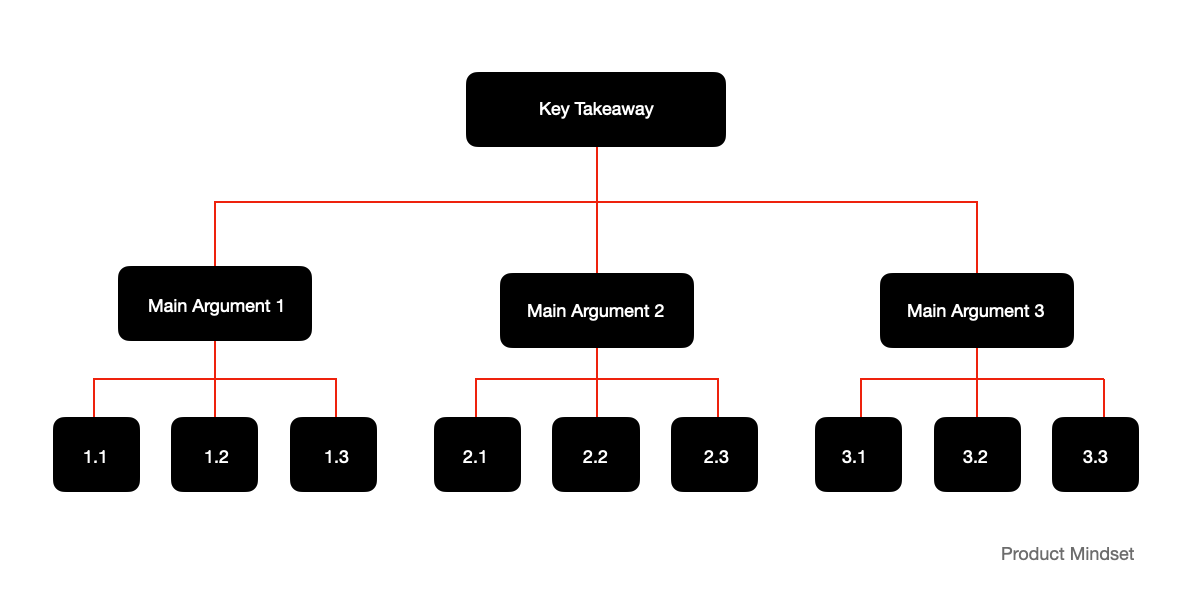
- A tool used to process and structure large amounts of information to convey a story, message or presentation without omitting important details.
- The principle is to cut to the chase in written texts or presentations to capture attention and provide easy-to-understand content
- The structure is applied after the thesis statement has been introduced
- The information that is subsequently presented branches off to the specific details in a clear and insightful manner
Structure
You begin with the answer first, by communicating your summary point (giving the listener a chance to absorb that point and see how the later points support it). Third-level data supports the second-level points, resolving any questions that might be raised and further strengthening the argument.
- Top Level: the summary point you need to communicate
- Second Level: the key points supporting the top-level point
- Third Level: data that supports the second-level points
How to use it

First, we set the stage with the introduction, starting with the governing thought. Then we go into the SCQA sequence, and finally, use horizontal and vertical logic to support our arguments with both deductive and inductive reasoning.
- Situation: the context, the time, and the place. Something everyone can agree on
- Complication: the problem, relevancy, sense of urgency to listen or act
- Question: the question that naturally arises following the complication — a start of question-and-answer flow
- Answer: your main idea